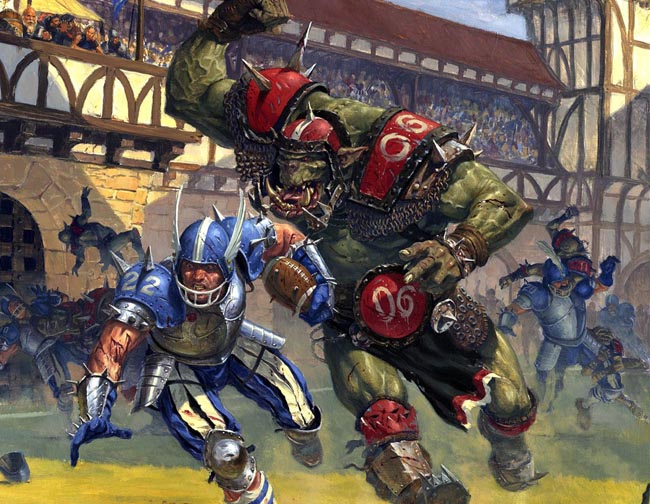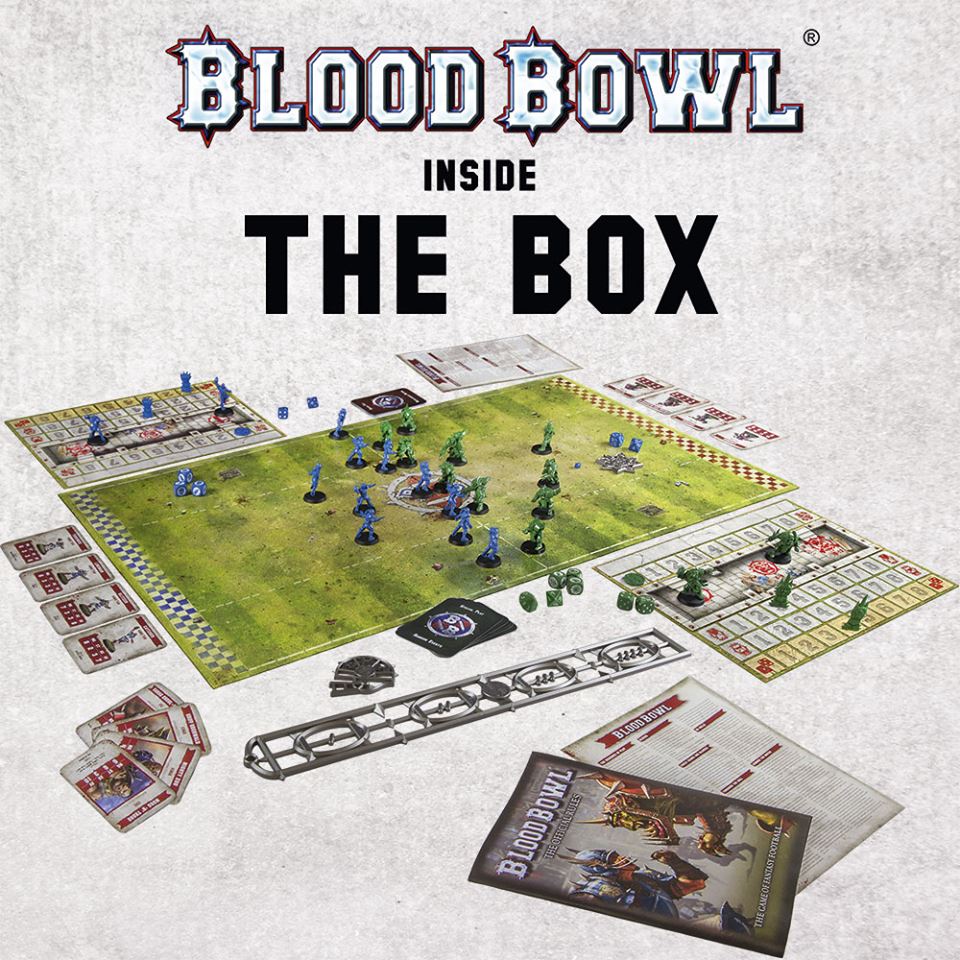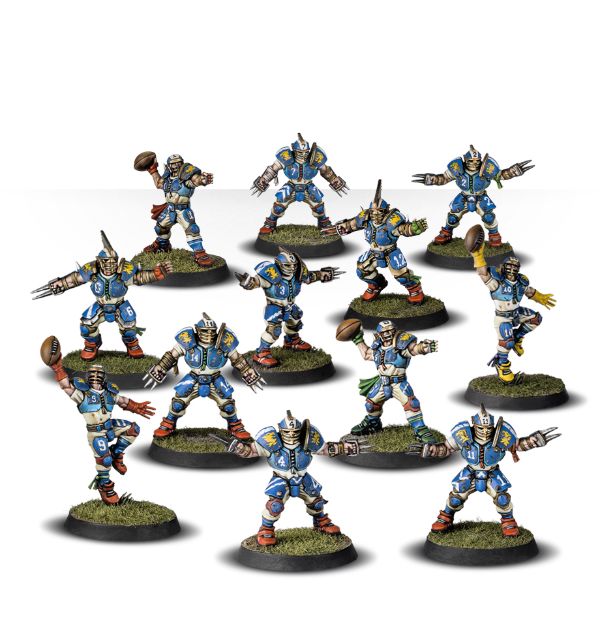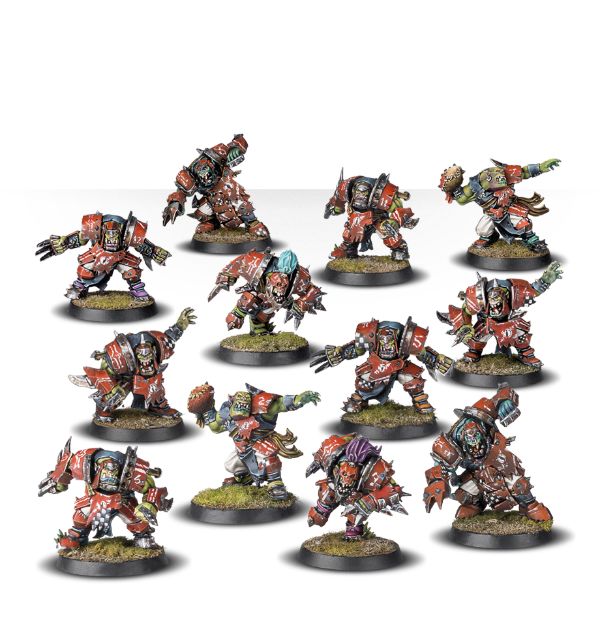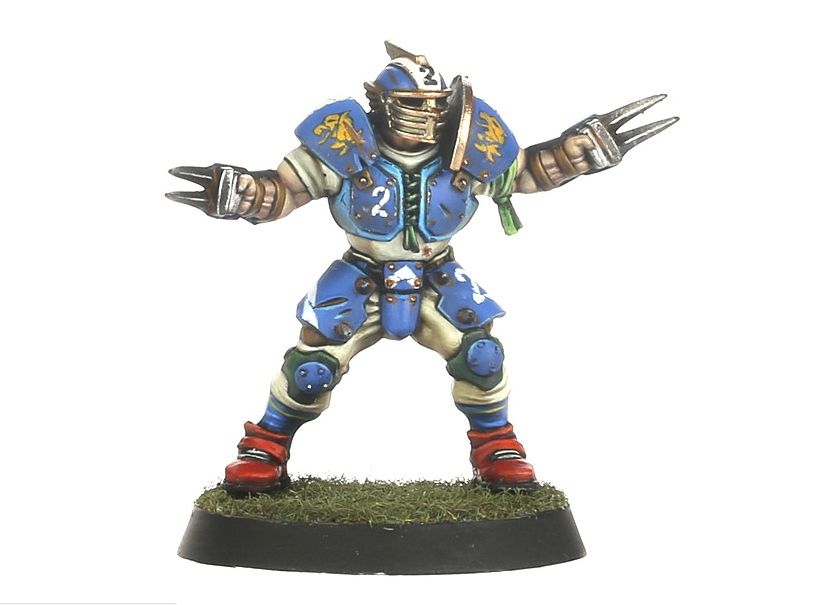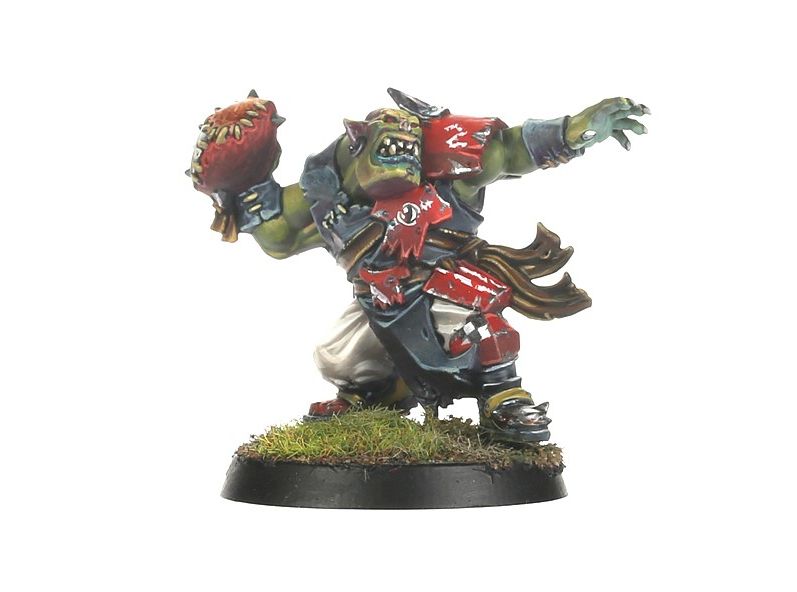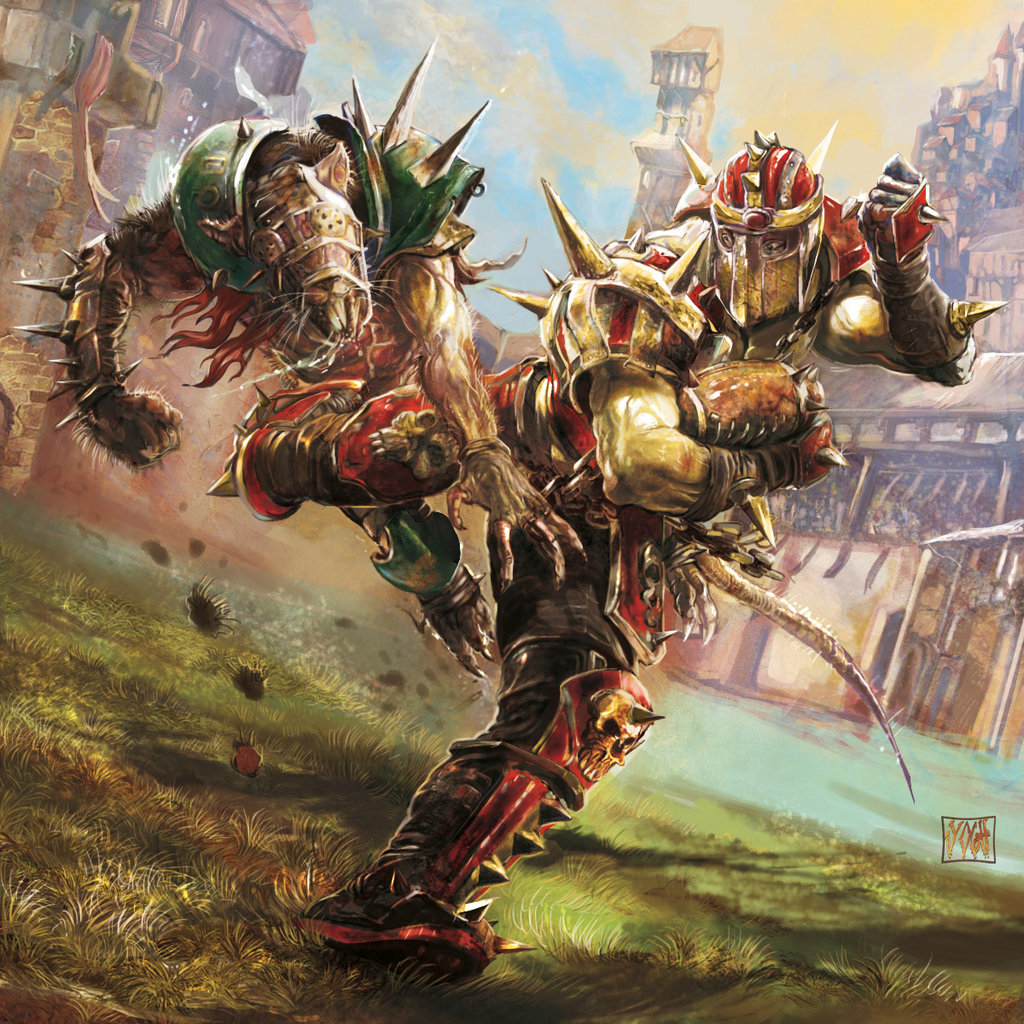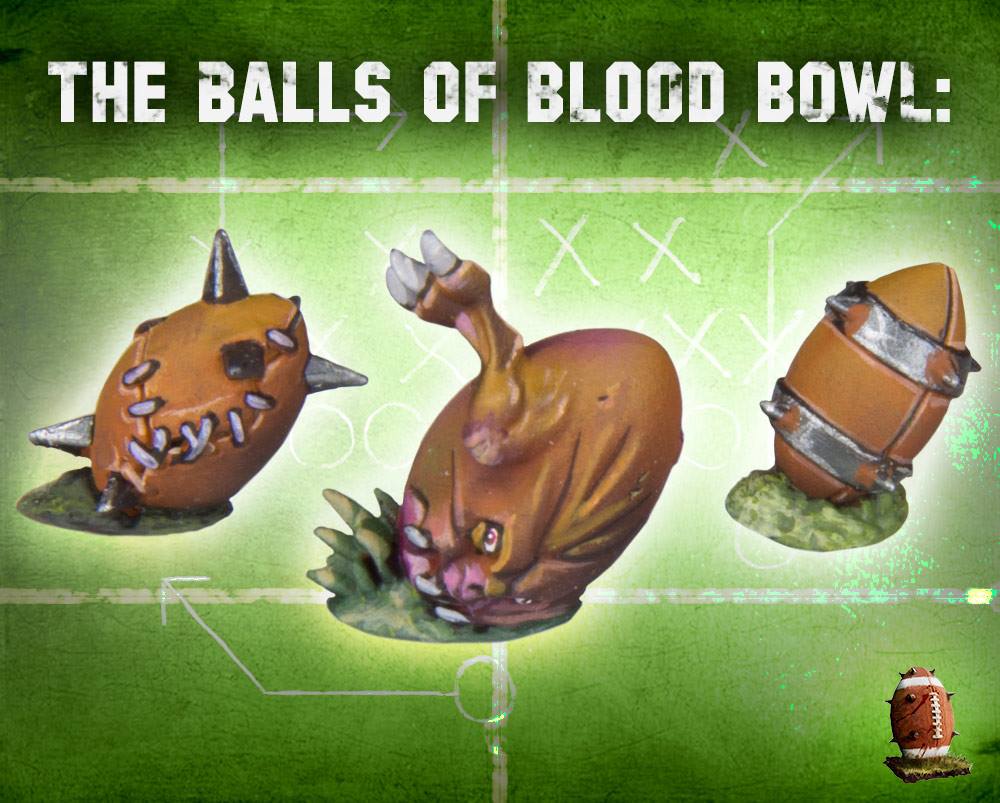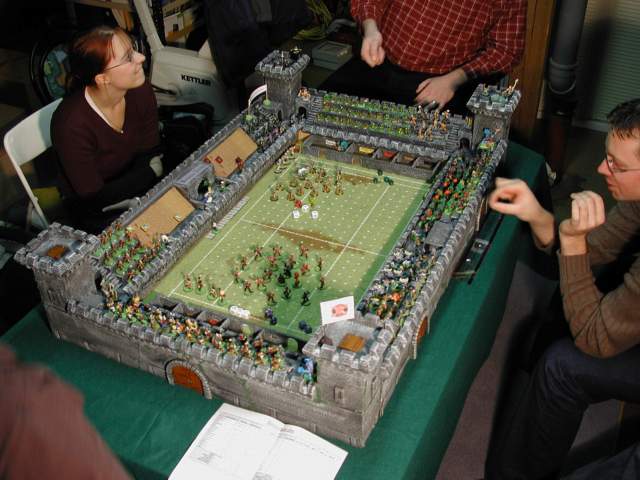A new Games Workshop game is going to be launched soon. Blood Bowl is a game about fantasy football. What is it and what to do with it - all this we'll discuss today.
Well, it's not correсt - to call it completely new. The 1st edition was released in 1986. However, due to the copyright issues, it was absent for a long time. The box we see now, starts the 5th edition of this game. The box includes new models and improved rules and also the whole game has a lot more details, which make it closer to big wargames.
Blood Bowl is a two-player, turn-based board game that typically uses 28 mm miniatures to represent a contest between two teams on a playing field. A board containing a grid overlay represents the field. Using dice, cards, and counters, the players attempt to score higher than each other by entering the opponent's end zone with a player who possesses the ball.
The "Blood" in Blood Bowl is represented by the violent actions available to players. Game play is based on a hybrid of American Football and Rugby. Players may attempt to injure or maim the opposition in order to make scoring easier by reducing the number of enemy players on the field.
The player races are drawn from the ranks of fantasy races and have characteristics that reflect the abilities of those races. Elves tend to be agile and good at scoring, while Dwarfs and Orcs are more suited to a grinding, physical style of play.
All teams offer a choice between player types with different statistics: related races (e.g. skeletons and zombies in undead teams, various lizardmen types), guests of allied races (e.g. trolls in orc and goblin teams), exotic or monstrous units (e.g. ghouls, wights and mummies in undead teams), and specialists of different roles (usually some combination of Blockers, Blitzers, Throwers, Catchers, Runners and Linemen). Teams can include any number of players of the most basic type (usually Linemen), while the stronger units are limited to 1, 2, 4 or 6 per team.
For now there are only Men and Orks in the new edition, but Scaven and Elves boxes are already announced.
Teams consist of eleven to sixteen players, of which eleven are allowed on the pitch at any one time. Each player is represented by an appropriate miniature and has statistics and skills that dictate his or her effect on play. There are four player statistics:
- MA (Move Allowance) indicates how fast the player is.
- ST (Strength) indicates the player's basic fighting ability.
- AG (Agility) indicates how well the player handles the ball and evades opposing players.
- AV (Armor Value) indicates how difficult it is to injure the player.
In addition, players may have special skills that affect any number of circumstances in play. Some of the more commonly used skills are Block (for fighting), Dodge (for dodging out of an opponents tackle zone), Sure Hands (for picking up the ball), Pass (for throwing the ball), and Catch (for catching the ball). These skills are not necessary to perform their corresponding actions, but will give the player an advantage.
In his or her turn, a coach may have each player take one of the following actions:
- Move - Move the player through empty squares (opposing players may try to trip the moving player if he or she moves close to them).
- Block - Fight an adjacent opposing player who is standing.
In addition, the following four actions may be taken by one player per team turn:
- Blitz - Move and then Block an adjacent opposing player who is standing (or Block and then Move).
- Foul - Move and then foul an adjacent opposing player who is prone (or just foul an adjacent player who is prone).
- Pass - Move and then throw the ball (or just throw the ball).
- Hand-Off - Move and then give the ball to an adjacent player (or just give the ball to an adjacent player).
Some skills also allow for special player actions.
If a player action fails, the team turn ends immediately (with some minor exceptions). This defining game mechanic is called the turnover rule. The turnover rule makes every action tense for the coaches, and together with the four-minute rule (a team turn must be completed within four minutes) it can make the game very fast-paced. Some rules such as the eleven player limit may be broken as long as the opposing coach does not notice; other rules are strictly off-limits. (For example: Failing to move the re-roll counter in order to get a free re-roll), however this idea is often only used with the agreement of both players (known as coaches).
The Blood Bowl universe has its own fictional background story which establishes the tone and spirit of the game. Additional background exists to describe the demeanor and character of the Blood Bowl players with frequent reference to rule breaking and excessive violence in a lighthearted manner. The over-the-top nature of the game is reflected through the game's mechanics, including the use of stylized secret weapons ranging from chainsaws to spiked steamrollers, the ability for large teammates to throw small teammates down field (even while they possess the ball), as well as in-game effects like fans throwing rocks and injuring players prior to kickoff.
Blood Bowl includes numerous tongue in cheek references to real life products and companies. The deity overseeing Blood Bowl is Nuffle - a pun on the pronunciation of NFL. The game spoofs at least four real-world trademarks, including McDonald's (McMurty's), Budweiser (Bloodweiser), Adidas (Orcidas), and Gatorade (Kroxorade). Many team names in the game's background are spoofs as well such as the Orcland Raiders (Oakland Raiders) and the Darkside Cowboys (Dallas Cowboys). Famous sporting personalities are parodied as well, with the most famous (and oldest) coach in Blood Bowl's background being Tomolandry the Undying (Tom Landry), and one of the most recently added stars being the Ogre thrower, Brick Far'th (Brett Favre).
A lot of players wonder if they could use these miniatures for Warhammer 40 000 or Age of Sigmar. Well, you could use it for conversion for a character or some hero, but in fact, it's better not to spoil a good game by taking the miniatures away for unnecessary conversions.
Nonetheless, it's not as popular as other Game Workshop games, Blood Bowl has its own atmosphere and a lot of fans. There are also tournaments and a lot of content. So - try it and make your own mind!
